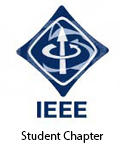
Doug Werner, John L. and Genevieve H. McCain Chair Professor of Electrical Engineering, along with Qi Wu, post doctoral research associate; Clint Scarborough, Ph.D. candidate; Bonnie Martin, Lockheed Martin engineer; Robert Shaw, Lockheed Martin engineer; Erik Lier, Lockheed Martin senior engineer; and Xiande Wang, research associate were awarded the 2014 IEEE Antennas and Propagation Harold A. Wheeler Applications Prize Paper Award. The paper, titled “A Ku-Band Dual Polarization Hybrid-Mode Horn Antenna Enabled by Printed-Circuit-Board Metasurfaces,” was published in the IEEE Transactions on Antennas and Propagation in March 2013. The award will be presented at the IEEE APS/URSI Symposium in July.
The Harold A. Wheeler Applications Prize Paper Award is presented to the authors of the best applications paper published in The IEEE Transactions on Antennas and Propagation during the previous year.
Paper Abstract:
Metamaterials with properly engineered surface properties have been recently proposed for application in the design of broadband hybrid-mode horn antennas, such as soft and hard horns. In this paper, we present the design, fabrication, and measured results of a square dual-polarization horn antenna with thin metasurfaces lining the four walls, demonstrating broadband, negligible-loss hybrid-mode operation. By employing a powerful genetic-algorithm (GA) design optimization technique, we have dispersion-engineered low-index metaliners whose surface impedances satisfy the balanced hybrid condition across the Ku-band. The optimized metaliners were synthesized based on conventional printed-circuit board technology, leading to a lightweight and low-cost construction. To improve the cross-polarization response, a simple dielectric plug was placed in the throat of the horn to perform effective mode conversion. Measurements showed that the fabricated horn antenna prototype provided low sidelobes, low cross-polarization levels, and radiation patterns that are approximately independent of polarization. Excellent agreement was found between measured and simulated results across the entire band of operation. Both the far-field radiation patterns and the aperture field distributions confirm the hybrid-mode operation of the horn, validating the balanced metasurface design. This metamaterial-enabled antenna represents a low-cost alternative to other types of soft feed horns, such as corrugated horns.


